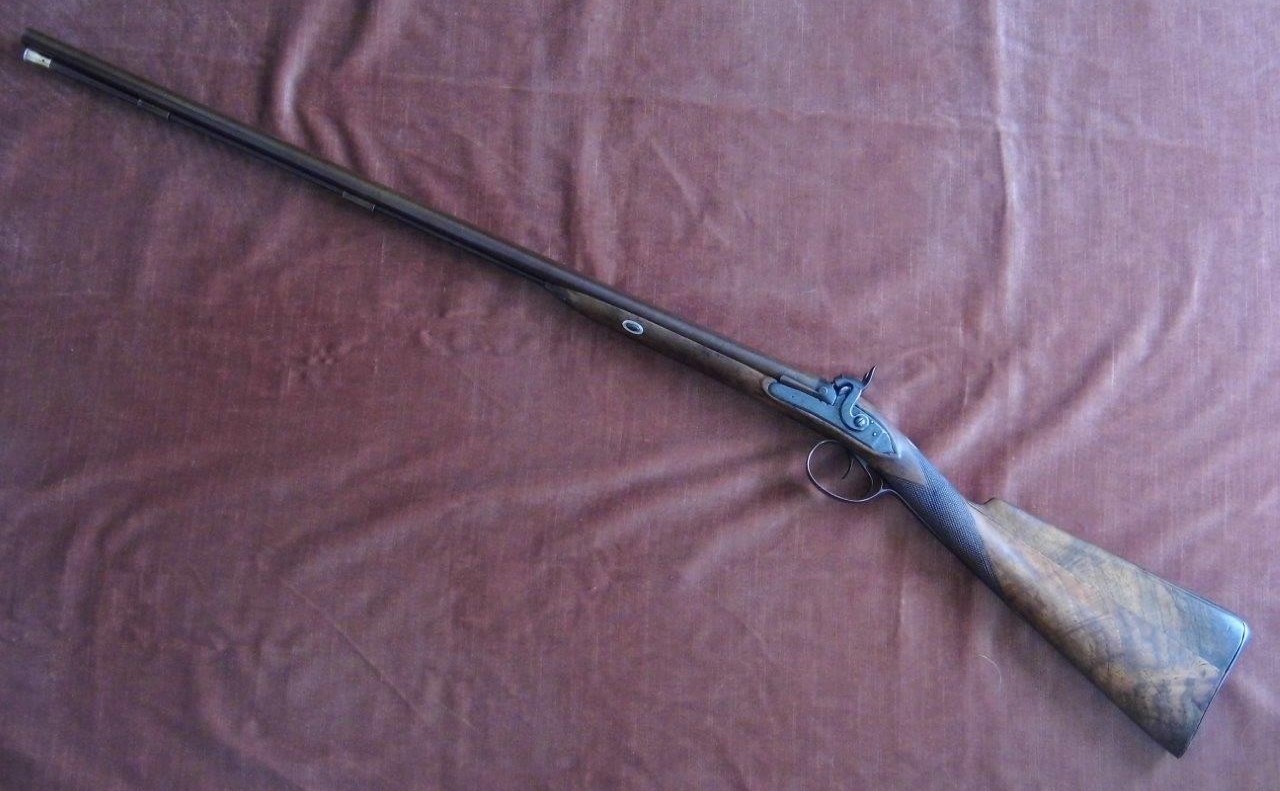
Joseph MANTON
The happy owner of this rifle signed on the lock Joseph Manton, famous British gunsmith, wonders what the two notches were for that are (no longer) used for anything. And he wonders about the very well-filled "hole" (circled in red) in one of the photos.
At first, I thought about the reuse of old flintlock locks, the notches used to fix the bassinet, and the "hole" having received the battery screw. But then it should also have old "holes" for the battery spring, and we see just as quickly that there was no room for such a spring.
The happy owner also suggests that the notches allowed the fulminate tube of the earlier model of 1818 to be slipped/fixed: this is entirely plausible.
I am also intrigued by the two-part butt in the lengthwise direction: it is the first time I have come across one of this type.
JW could be the gunner, but without any guarantee.
One detail also strikes me, namely that the second photo clearly shows that the edge of the plate was at 45°, but it stops above the small hole that accommodates the small rod at the end of the large spring (sorry for the poverty of my gunsmithing vocabulary...)
I therefore suggest that these are still "reused" plates that were originally larger and that were transformed for percussion (possibly for the 1818 system).
Especially since at the time, we threw away (almost) nothing...
GP

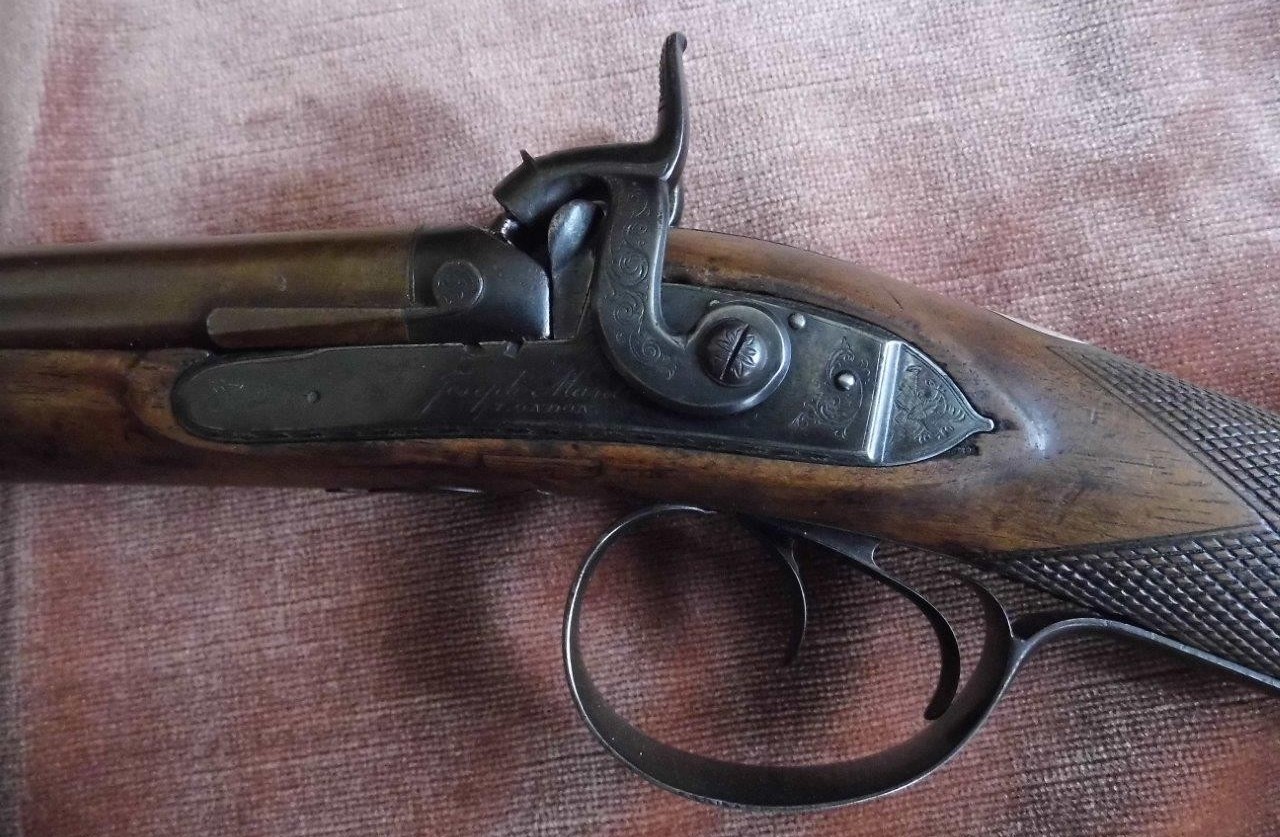
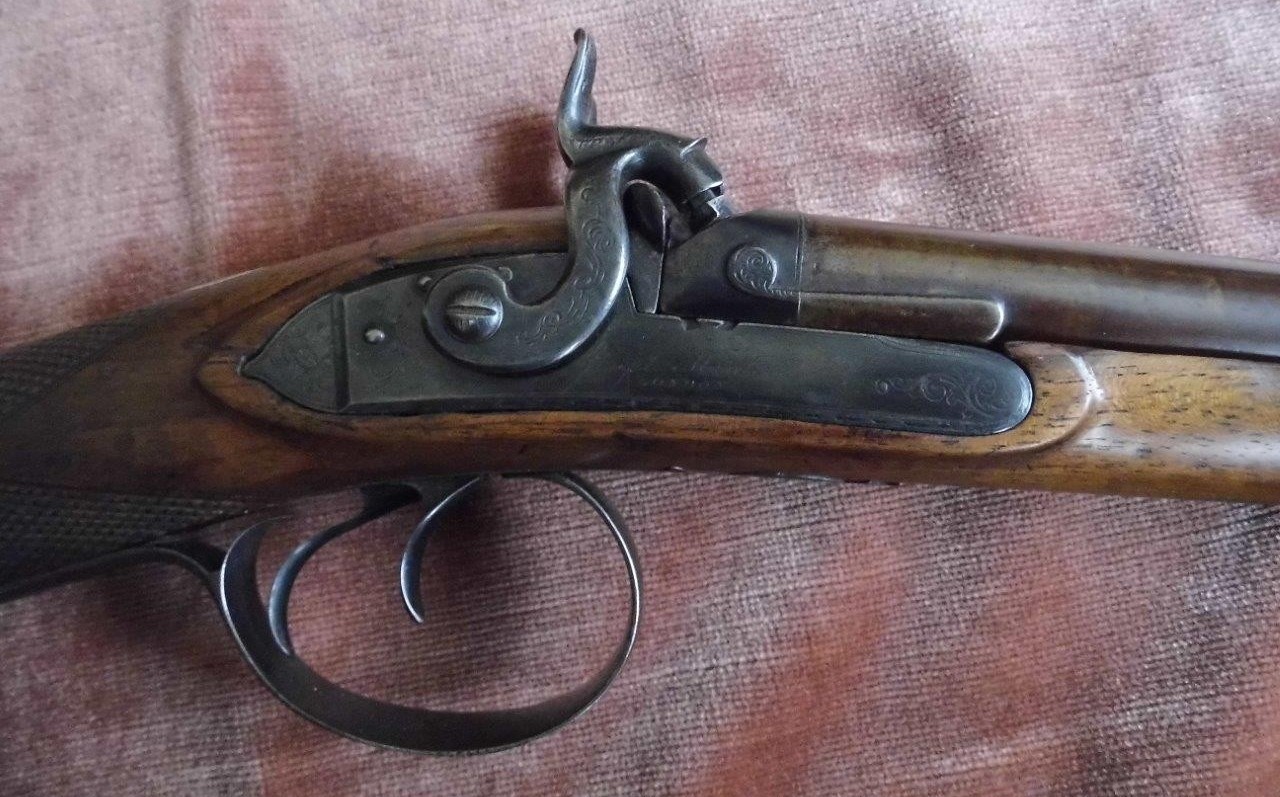

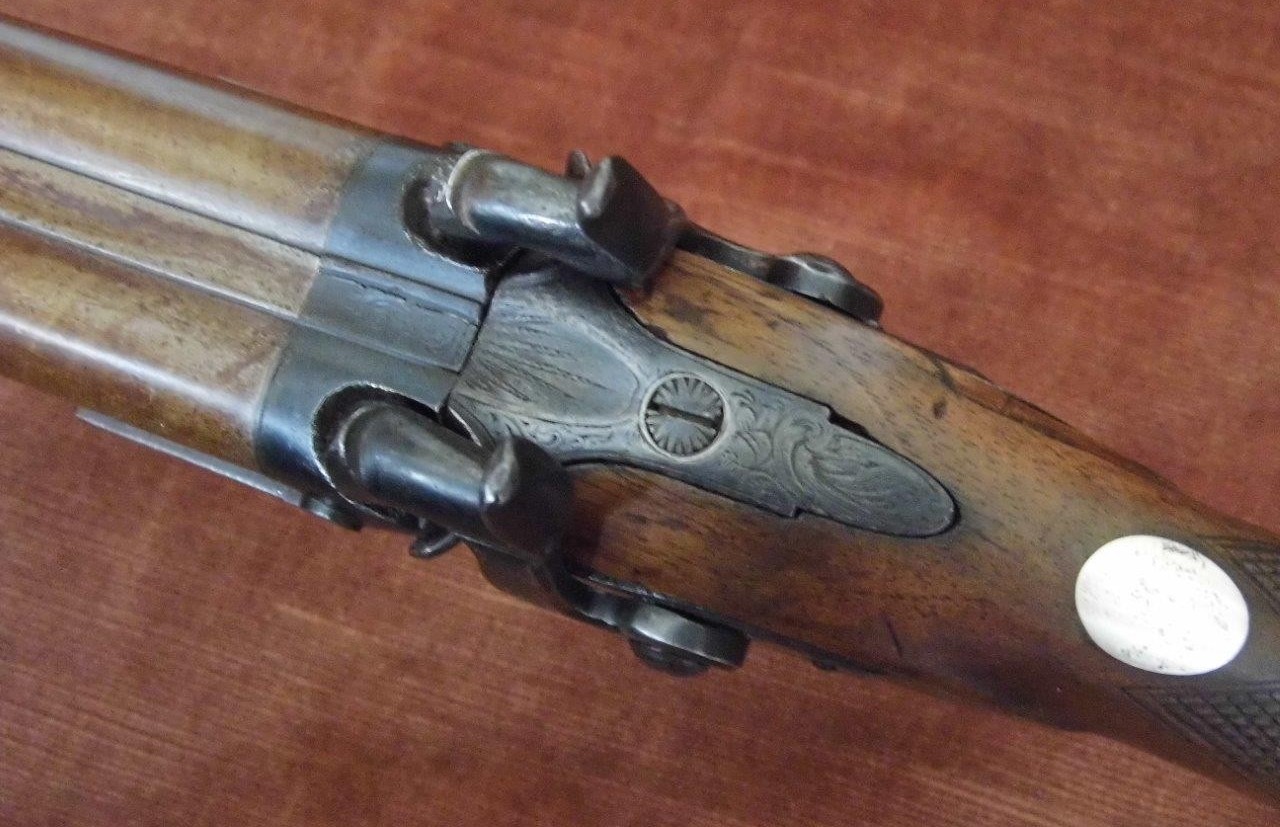


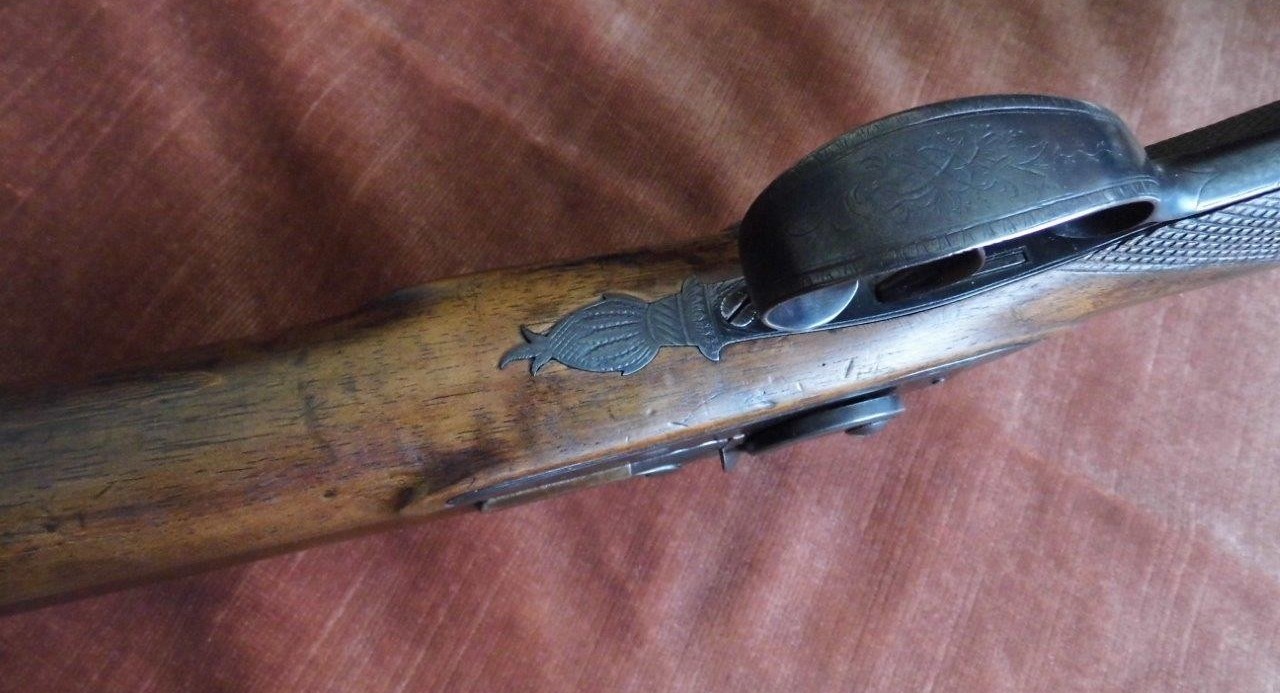
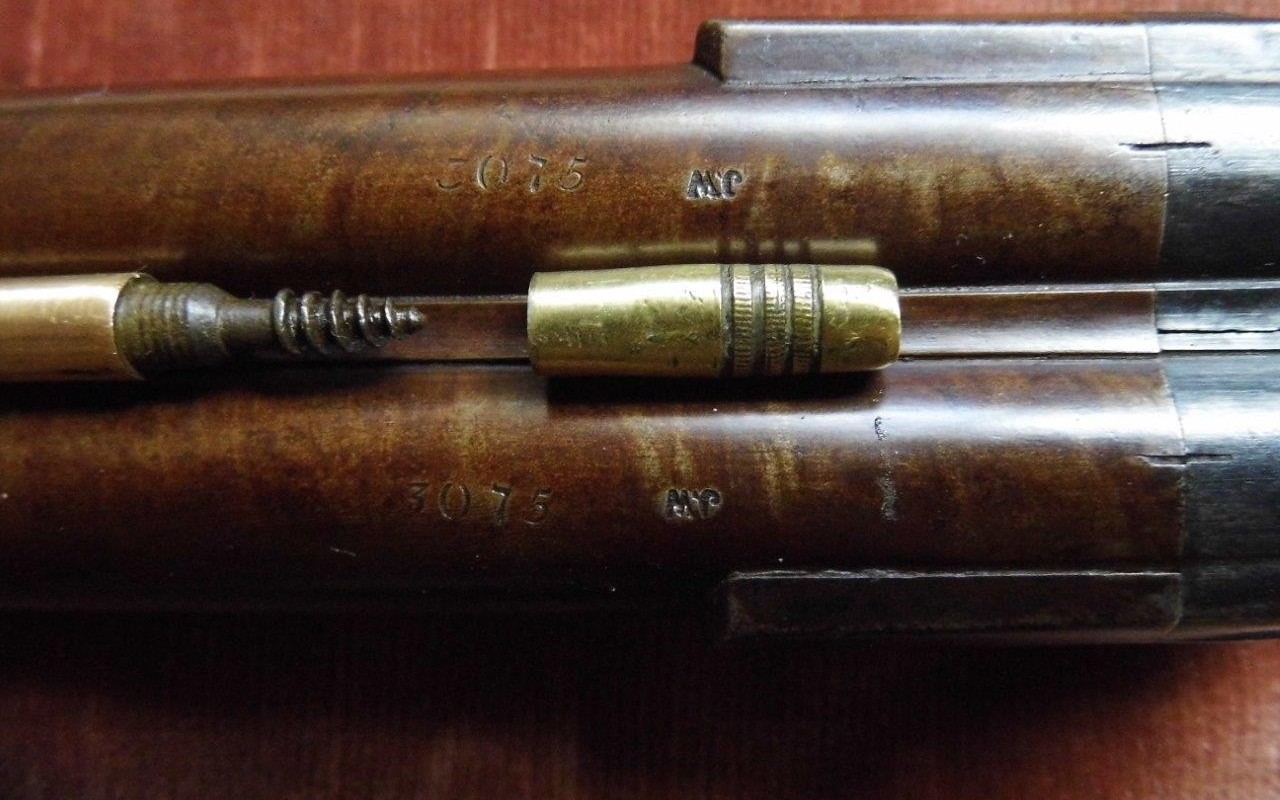
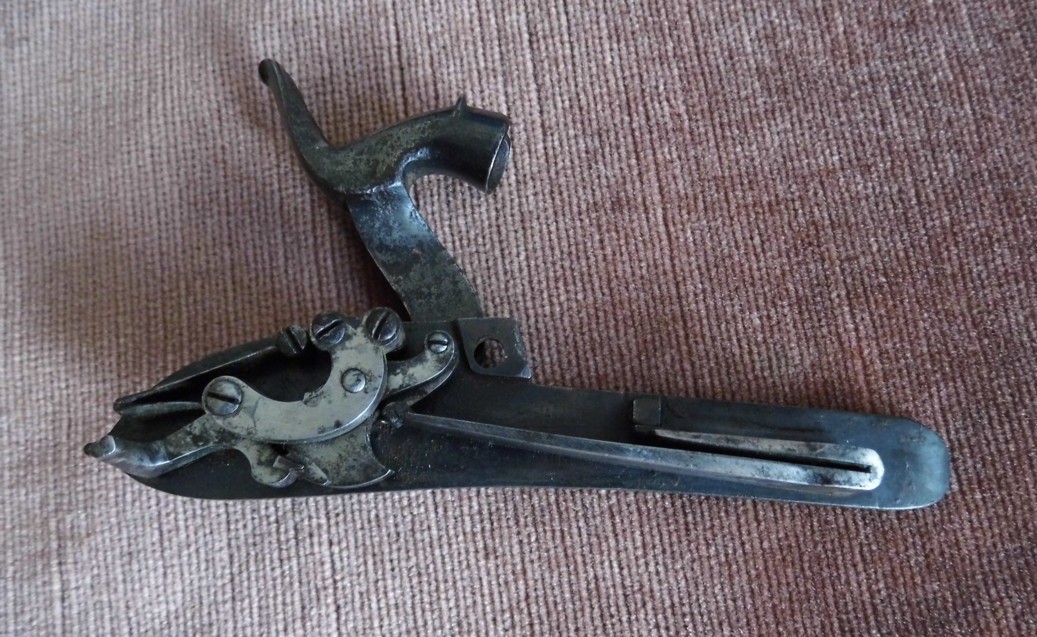
Joseph Manton
PAIR OF GEORGE III PATENT BREECH CAPLOCK CONVERSION DUELLING PISTOLS BY JOSEPH MANTON OF LONDON, CIRCA 1814(CONVERTED 1828-30).
15 1/4" overall with 10" octagon .48 caliber Damascus barrels- one smoothbore and the other rifled (a rare feature of Manton pistols discussed on page 10 of Neal and Backs "The Mantons: Gunmakers"). Manton breeches with sunken rectangular cartouches stamped within "Joseph/ Manton/ Patent/ Crown". Lockplates signed "Joseph Manton/ London". Manton's flat hammers and patent screw bolsters. Steel mounts finely engraved and blued. Barrels browned Damascus finish. Locks, hammers and barrel tangs finely engraved. Silver rectangular thumb pieces with armoured crests and monograms. Walnut stocks with horn forend caps. Original rosewood rods with horn tips.








MANTON
Střckel: "John Manton, London 1752 – 1834.
This one signs all his weapons "MANTON LONDON", received between 1797 - 1821 several patents."
Best known maker of pistols with the distinct shape of grips.
A cased pair of double barred flintlock pistols of the highest quality, while single shot pistols of his are rare, the double-barreled are very rare!
Photos "HORST HELD"








Another weapon from Manton
Photos "COLLECTORSFIREARMS"






J MANTON SHOTGUN.
DAMASCUS BARRELS.
Marked J. Manton, London.



